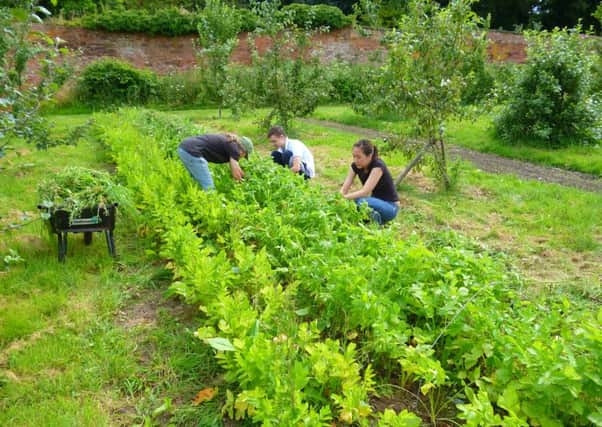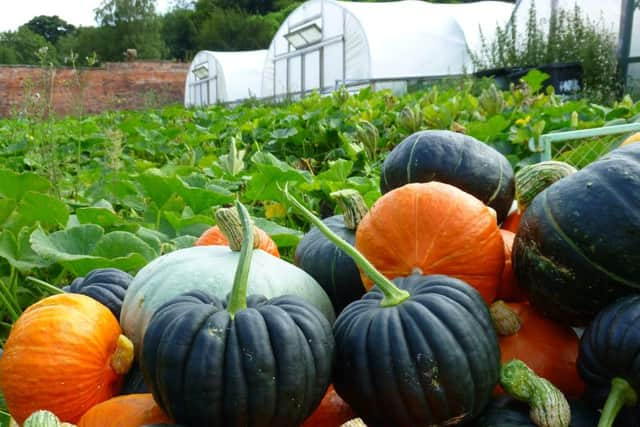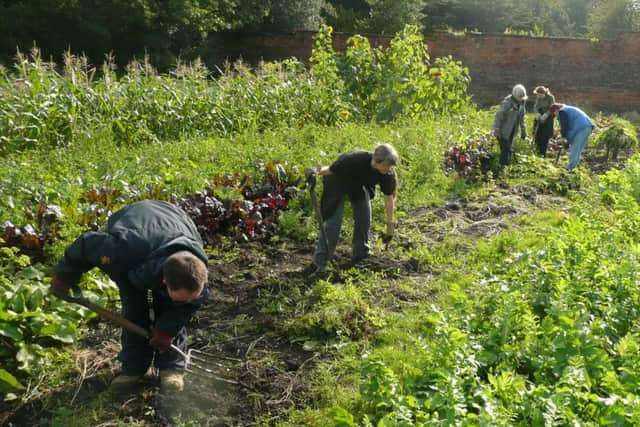FEATURE: 200-year-old '˜kitchen garden' is thriving once again


An ageing invoice for 500,000 bricks, purchased in 1797, is the only clue as to the date of its creation.
A number of well known head gardeners have tended crops in the two-and-a-half acre garden that stands proudly at the top of the property, but if records were kept, they’ve long since been lost, or destroyed.


Advertisement
Hide AdAdvertisement
Hide Ad“If I had a time machine, I’d go back and have a walk around it, as it was then,” says Darrel Maryon.
“I’d be the ghostly figure from the future - asking them where the orchard is located and what crops they’re growing.”
It’s information Darrel would kill to have. After all, 12 years ago he was the man charged with restoring the rundown field to its former glory - a job he’s done well.
“It was all grassed over when we started work on it,” says Darrell, who was working at Heeley City Farm in 2004 when they were invited to take over the running of the former garden.


Advertisement
Hide AdAdvertisement
Hide Ad“One of our first jobs was to stablise the walls, which were falling down in places, so that it was safe for us to work. Once that was done, and we’d cleared all the edges - which were filled with weeds and bottles of plonk that’d been lobbed over the walls - we could begin seeding.”
The restoration work has been extensive and today the walled garden is, once again, beautiful to behold. Two huge fields are filled with crops and flowers; an orchard to the left bears apples, cherries and plums, and large greenhouses glint prettily in the sunshine.
“We imagine it looks now much as it would have looked in the 1800s, minus some of the more modern materials,” says Darrell
Back then, this was the house’s ‘kitchen garden’ and it would have been used to grow the vegetables, fruit and flowers needed for Wortley Hall.


Advertisement
Hide AdAdvertisement
Hide AdDarrell explains: “Houses like Wortley had the family, plus a big live-in staff to feed, and then parties, weekend visitors and hunting parties, so this garden would have had a big demand on it. We believe the estate had a staff of about 22 people working the grounds, including five full-time gardeners.
“We held a research project here a few years ago, with Heritage Lottery Funding, to try and find out more about the history of the area, the hall, the family, and - of course - the kitchen garden. The researchers uncovered everything they could but there was still frustratingly little about the walled garden, which suggests that information just doesn’t exist anymore.”
There is plenty Darrell does know however. “That’s Avenue Cottage,” he reveals, indicating a large house just beyond the wall, at the top of the property.
“That was where the head gardeners lived. It was eventually sold off by the Earl and is now a private property. This land was a little bigger back then, with rows of greenhouses all down one side, that have since been sold on and rebuilt as homes.”


Advertisement
Hide AdAdvertisement
Hide AdDarrell also informs me there was a POW camp a few fields over during the first world war and he has it on good authority that a number of the German POWs were brought over to work in the garden.
“These were conscripts, men who were farmers and gardeners in their old lives back in Germany, and were only too happy to live out the war in relative peace here in Sheffield. Some of them even stayed and settled here after it was all over.
“Then the house was taken over by the army during WWII and I’m told the American soldiers would burn the Earl’s papers and records to heat the hall when it got cold - that’s probably where all the precious head gardeners journals went!”
Like most kitchen gardens of the time, things started to go downhill after WWII, when, all throughout England, grand houses like Wortley began to downsize their staff and sell-up. It fell into utter disrepair towards the end of the last century, until Darrell and his team moved in. Darrell is here almost every day throughout the summer and is supported by a team of around 16 weekly volunteers. Once again the garden is productive, growing produce which is sold all across the city and - rather fittingly - it still serves the house it was created to serve, providing vegetables to the hall’s restaurant.
Advertisement
Hide AdAdvertisement
Hide AdAnd like most places with plenty of history, the walled garden has seen its fair share of ghost stories, Not that Darrell has ever seen any figures roaming the grounds. But what if he did?
“I’d grab a pen and paper,” he says decisively.


“...and ask them to provide a detailed description of the walled garden.”
ORGANIC MILESTONE
2016 marks ten years since the walled garden received its Organic licence - something Darrell is hugely proud of.
“This garden is a living, breathing operation, filled with wildlife - weasels, grass snakes, owls and toads - and our organic label is a huge reason for that. People think being organic is about what you don’t do - no chemicals, no artifical fertilisers - but it’s also about what you postively DO do. We leave areas at the back with nettles and thistles because it’s an important habitat for widlife, we have flowing plants to attract beneficial insects, like ladybirds and hoverflies and we rest land every six years, using clover to naturally rebuild fertilisation. We’re proud to be organic.”